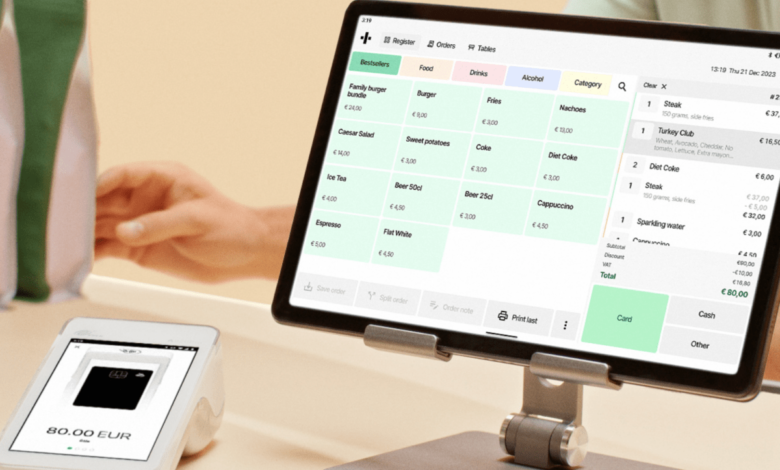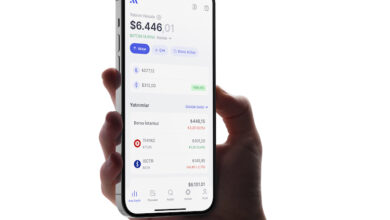Flatpay rings up $47M to target smaller merchants with simple payment solutions

As the world waits for $65 billion payments tech giant Stripe to go public, a wave of smaller startups continues to roll into the market to pick up more payments business. In one of the latest developments, Danish company Flatpay, which builds payment solutions for small and medium physical merchants like shops, restaurants and salons, has raised €45 million ($47 million) led by Dawn Capital.
Flatpay had raised just under $21 million before this latest Series B, and with this new funding, we understand that is now valued at well over $100 million. The company plans to use the money to expand into new markets in Europe and to build out more products alongside the point-of-sale and card terminals that it sells today. Some of these products might involve AI but only as an enabler of certain features, rather than a core service, said Flatpay’s CEO Sander Janca-Jensen.
“We have been able to raise money without mentioning the AI buzz word,” he said. “It seems to be rare these days.”
€45 million is a strong Series B in the current market in Europe, especially when you consider the size of the startup. Founded in 2022, Flatpay currently has just 7,000 customers across its current footprint of Denmark, Finland and Germany.
Even with its revenues and customer base both growing at a monthly rate of 15%, Flatpay’s business is just a drop in the merchant ocean.
There are more than 24 million SMBs in Europe; point-of-sale terminals in the region number more than 17 million; and there are not just dozens but hundreds of other payments services — they include the likes of Stripe, Adyen, Sumup and Paypal through to much smaller players like SilkPay — all targeting the same customers that Flatpay is.
But investors believe there is a lot of potential in the startup, enough to bet early and strong, even in the current economic climate.
Janca-Jensen, who co-founded the company with Rasmus Busk, Rasmus Hellmund Carlsen and Peter Lüth, said the gap Flatpay spotted in the market was a lack of really simple solutions for merchants who want the convenience that technology can bring, without the harder aspects that come along with it, such as troubleshooting, understanding the intricacies of charges and integrating products into their business flow.
The startup’s approach to addressing that comes in three ways, he said. On the customer side, Flatpay works with a defined size of customer: only merchants that process over €100,000 annually, and the customers cannot be multiple-location chains or franchises. Janca-Jensen said that it regularly rejects customers if they don’t meet those parameters.
On the technology side, it has matched its target customer size with the unit economics of its payment solutions to come up with very basic, flat fees (hence the startup’s name) of 0.99% for terminal transactions and 1.49% for POS purchases. Flatpay then doesn’t set a minimum charge for single transactions, and it doesn’t charge fees if customers are paying with international cards. Janca-Jensen admitted that its model means that Flatpay sometimes loses money on transactions, but it overall lowers the bar for usage and encourages more spend and overall revenue for the company.
Perhaps most interestingly, on the sales side, despite its focus on streamlined technology, Flatpay only sells via live sales visits. No online sales (although there are specialists who will help arrange those in-person sales visits and handle support), no virtual visits, and no plans to introduce either.
Janca-Jensen said he and his co-founders developed a fondness for direct field sales when they were selling home alarm systems in a previous life.
As with payments hardware and software, security can be a hard sell to customers. They found that the only way they could reliably seal deals was by selling in person. And the only way that sales people could sell in person was by understanding the products really well. And the only way they could understand the products really well was by the company paring down the products themselves.
“You have to get salespeople to understand the product enough to explain it well to buyers. It sets high standards for how simple your product must be,” said Janca-Jensen. “We like that challenge.”
Currently about half of Flatpay’s 200 employees are on the sales side, he said, split between those who help arrange sales visits and handle support; and those who visit customers in person. Typically, they are recruited from other retail roles rather than software sales.
“We steer clear of SaaS account executives and fintech people,” he said. In his opinion, SaaS sales are so easy, that people who work in that area are “too lazy and complacent” to make the grade for field sales.
So far, in the three markets where Flatpay operates, the aim has been to recruit very local salespeople who understand the nuances of their respective markets. That seems to raise a lot of questions about how well this can scale longer term, but Janca-Jensen brushes that concern aside, and investors are equally bullish.
“The field sales model, when done well, works. You can localise and roll out teams in a cost-efficient way to explain on a local basis why a product makes sense,” said Josh Bell, a general partner at Dawn who focuses on fintech, in an interview.
He pointed out that iZettle — another company Dawn backed — was also an early mover in using field sales to sell its fancy new tech to non-technical customers. “They were a winner, but even they never did it as well as Flatpay does this. Payments is huge and Flatplay has touched just at a fraction of the opportunity.”
Denmark’s Seed Capital also participated in this round, along with other, unnamed investors.
Source link



